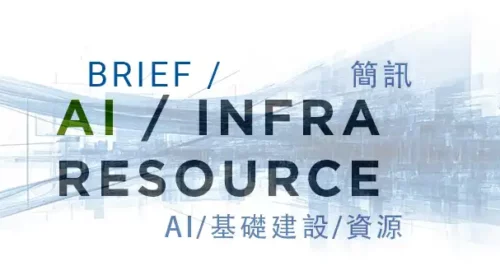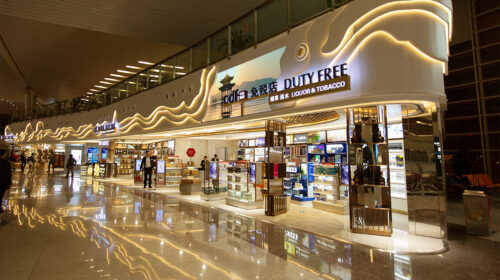China Oriental Group eyes green escape from overheated steel furnace

The company hopes to revive its prospects through two new joint ventures with ArcelorMittal, as it suffers from weak demand and oversupply in China’s steel industry
Key Takeaways:
- China Oriental’s shares fell after its announcement of a new $2.7 billion green initiative in partnership with global steel giant ArcelorMittal
- The domestically focused private steelmaker is suffering from sluggish demand from property and infrastructure builders in its home China market
By Xiao Lin
Think of “green,” and power-hungry, heavily polluting steel mills are hardly the first thing that comes to mind. But privately owned steel maker China Oriental Group Co. Ltd. (0581.HK) wants to change that perception with its new move into environmentally friendly products.
Last Wednesday, the company, which makes steel beams and strips widely used in construction and construction machinery, announced its formation of two joint ventures with ArcelorMittal (MT.US), the world’s second-largest steelmaker. The ventures will produce items that can be used in manufacturing goods from electric vehicles (EVs) to green power facilities.
China Oriental called the foray a “high-tech, green, and digital” endeavor to expand into higher-end products that align with China’s carbon neutrality efforts and the thriving EV market, according to the announcement.
One of the joint ventures will produce materials that the other will use to make NEMM products, a soft magnetic material that can be used in manufacturing sectors ranging from automobiles to power generation, for the domestic Chinese market. The two ventures will require $2.66 billion in investment, including $660 million for the upstream venture and $2 billion for the downstream one.
China Oriental added that both joint ventures have received support from local governments in Tangshan, Hebei province, and Changzhou, Jiangsu province, in terms of land acquisition, access to energy infrastructure, and financial incentives.
Despite the green spin, investors were less impressed with the company’s environmentally friendly turn. Its shares edged down slightly to HK$1.18, near historic lows, over the two trading days after the announcement. The shares have fallen by 9% since the beginning of this year, defying a 21% rise for Hong Kong’s benchmark Hang Seng Index.
The company’s sluggish shares reflect the struggles faced by the wider Chinese steel sector, which is getting squeezed by a property downturn that is dampening demand for their products used in construction and construction machinery. The resulting excess supply is forcing steelmakers to cut prices, even as China’s decarbonization efforts raise their manufacturing costs.
Unlike its larger state-owned peers, such as Baoshan Iron & Steel (600019.SS) and Angang Steel (000898.SZ; 0347.HK), which provide a wide range of products and have been expanding overseas, China Oriental focuses on lower-end products sold domestically, mostly to northern China. That’s causing it to take a harder hit than those state-run peers, which also have far greater resources due to their close government ties.
At the same time, China’s EV and solar power markets that the new joint ventures will target as future customers are also facing challenges from overproduction to protective tariffs from other countries. That hardly bodes well for the ventures, perhaps explaining the tepid investor reaction to the announcement.
China Oriental began as a small state-owned steel factory in North China’s Hebei province in the 1980s. It became private, under the leadership of the plant manager Han Jingyuan, in the early 2000s as part of reforms that consolidated larger steel mills and transferred smaller ones to private ownership.
China Oriental fell into the latter group, specializing in H-section steel products widely used in building structures and machinery. Close to both iron ore supplies and steel customers, the company claimed to be one of the most efficiently run steel producers in China, according to its prospectus at the time of its Hong Kong IPO in 2004.
Enter ArcelorMittal
ArcelorMittal entered the picture three years later after India’s Mittal merged with Arcelor to become the world’s largest steelmaker in 2006. The newly forged Indian giant had been eyeing the Chinese steel market for years, setting up its first sales offices in the country as early as the 1990s.
Chinese restrictions on foreign shareholding of major state-owned steelmakers meant that Mittal could only acquire shares of smaller ones. In 2005, Mittal acquired 37% of one such company, state-owned Hunan Valin Steel (000932:SZ). A year later, the newly created ArcelorMittal acquired 28% of China Oriental.
Lakshmi Mittal, President and CEO of ArcelorMittal, said at the time: “We have made no secret of our wish to participate more actively in China’s fast growing steel market, and the agreements we have signed are a major step forward in delivering that strategy.”
Starting in 2014, ArcelorMittal gradually increased its holdings in China Oriental, raising its stake to a majority 54.49%. But that caused China Oriental’s public float to drop below the minimum 25%, violating the Hong Kong Stock Exchange’s listing rules.
As a result the stock was suspended for three years until February 2017, and trading only resumed after China Oriental issued new shares to bring the public float back to 25%. ArcelorMittal today remains China Oriental’s largest shareholder, with a 37% stake, while Han Jingyuan is the second-largest shareholder.
ArcelorMittal was the world’s largest steel producer until 2021 when it was overtaken by China Baowu Steel, a Chinese company formed through a state-orchestrated merger of more than a dozen Chinese steel makers, including Baoshan Iron & Steel. In its latest interim report, the company said that China’s excess production relative to demand is resulting in very low domestic steel spreads and aggressive exports.
Chinese steel makers are experiencing their lowest profitability in nearly a decade, with average net profit margin of Chinese steelmakers at only 0.5% in the first half of this year, according to the 21st Century Business Herald, which surveyed 45 steelmakers.
China’s steel exports reached 10.15 million tons in September alone, a year-on-year increase of 25.9%, marking the highest level since June 2016, according to the latest Chinese customs data. Total export volume for the year is expected to exceed 100 million tons, reaching an eight-year high.
China Oriental’s revenue totaled 22.57 billion yuan ($3.18 billion) in the first half of this year, up by a slight 2.3% year-on-year. As the sector suffered from oversupply, the company fell into the red last year with a loss of 160 million yuan for 2023. It returned to the black in the first half of this year, though its 123 million yuan profit was down 55.4% year-on-year as prices remained depressed for its finished steel products. As its profits come under pressure, China Oriental announced it wouldn’t distribute any interim dividend this year.
Baoshan Iron & Steel fared even worse on its top line, recording a 4.1% revenue decline in the first half of the year. But its profits fared better, down just 0.17% for the period, as it offset the weakness at home through exports. It disclosed that its gross margin in overseas markets last year reached 10.2%, nearly five percentage points higher than that of the domestic market.
As a smaller player, China Oriental probably lacks the resources to export its products. Instead, it hopes its major foray into environmentally friendly products will put it on a steadier footing by producing for EV and green power producers with better longer-term prospects.
To subscribe to Bamboo Works free weekly newsletter, click here





